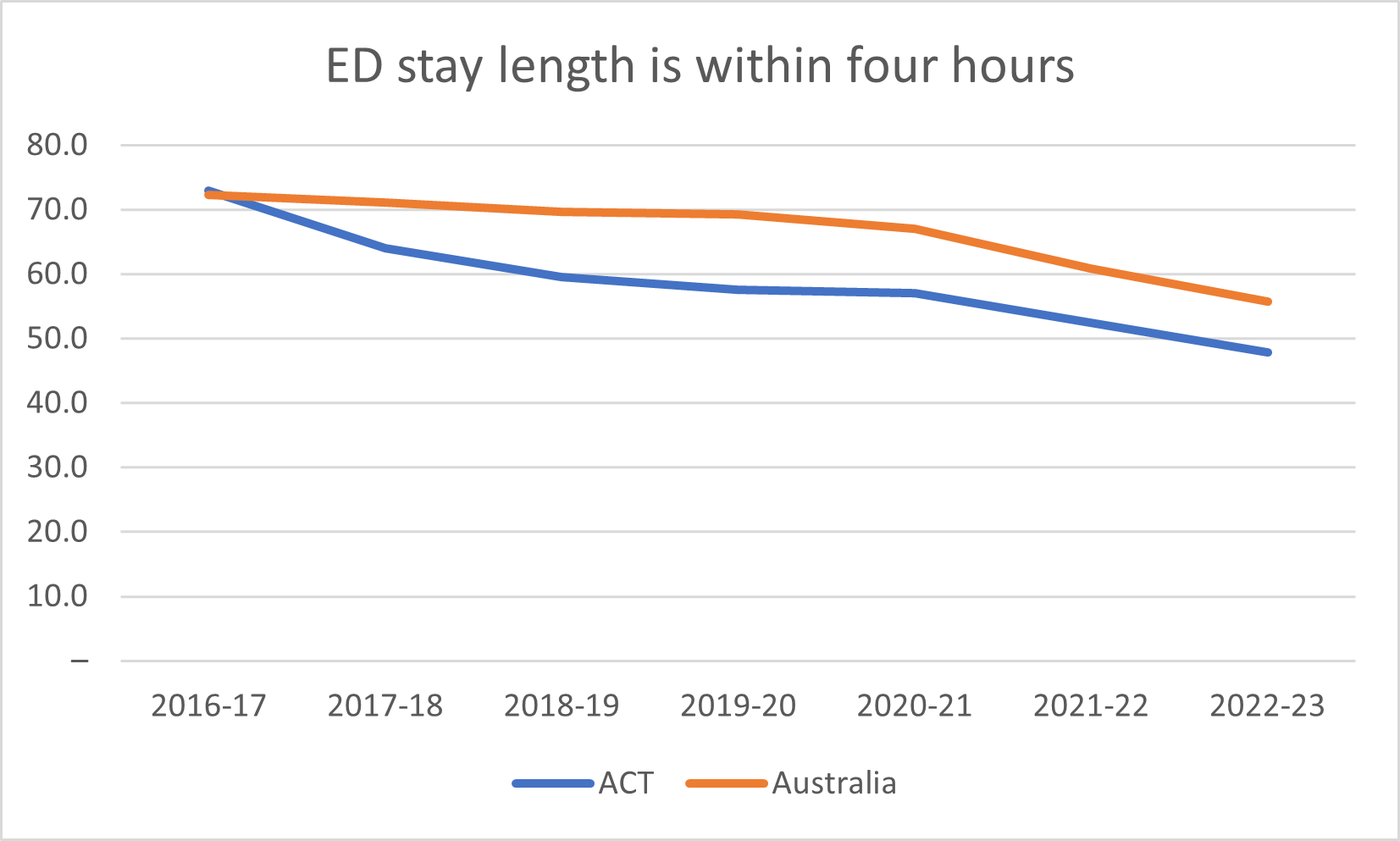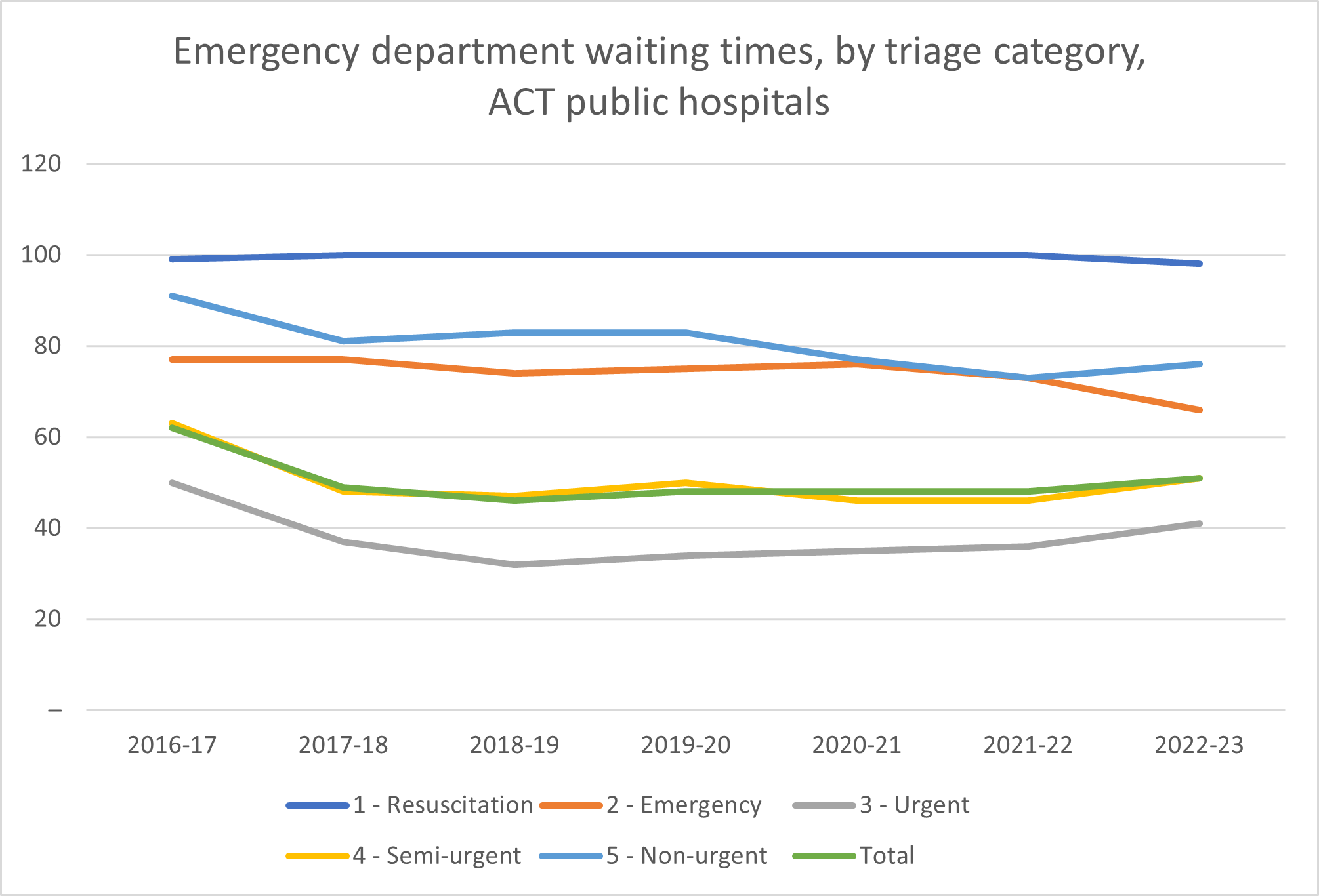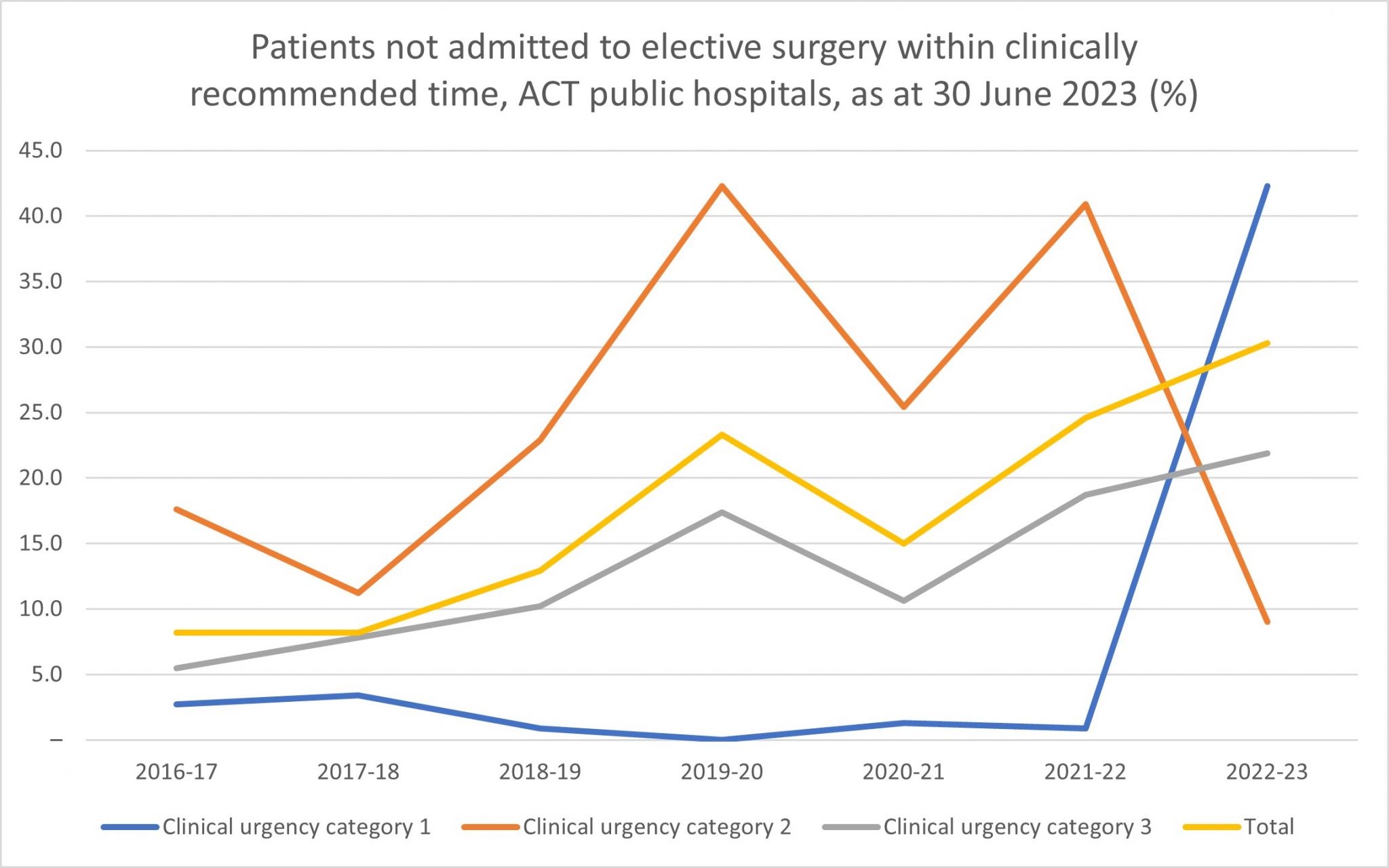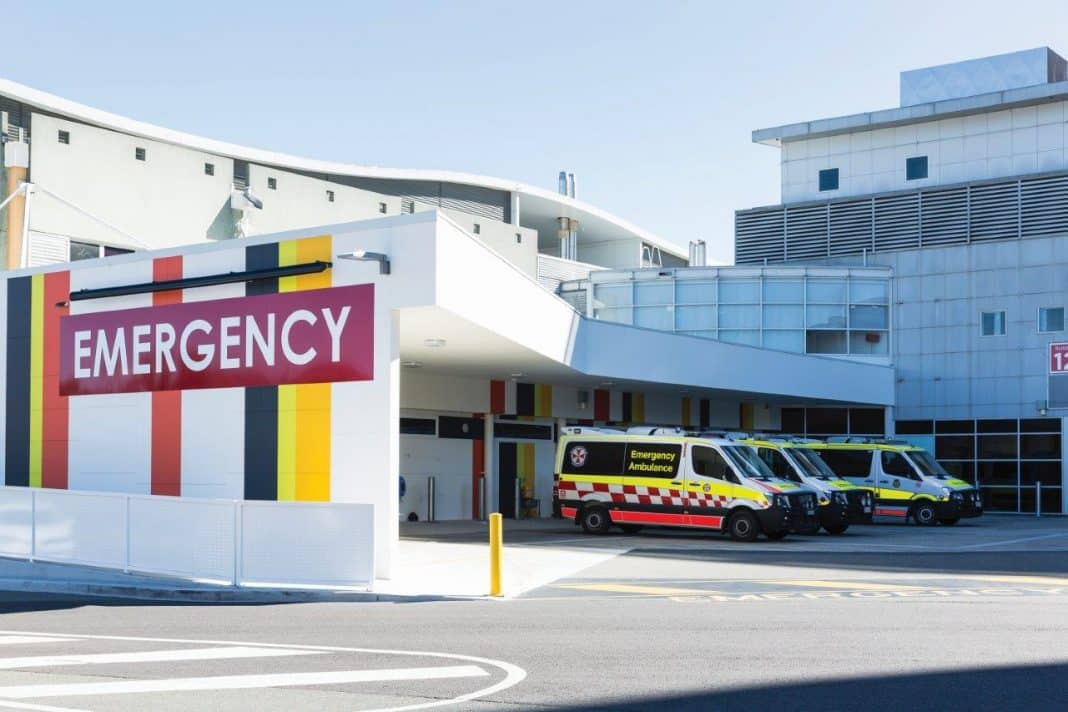For the fourth year in a row, the ACT had the longest emergency department waiting times in the country, and its longest elective surgery waiting times in six years, the 2022–23 Report on Government Services revealed.
Only 47.9 per cent of emergency department patients were seen within four hours. (The second lowest was Tasmania, at 51.4 per cent, and the national average was 55.8 per cent.) Over the last decade, ED waiting times have steadily declined, from 73 per cent of patients seen within four hours in 2016-17. (Table 12A.18)

Emergency department waiting times for each triage category were below the national average (except for emergency, which nevertheless declined from last year). However, there was some improvement in total, urgent, semi-urgent, and non-urgent waiting times. (Table 12A.13)

Elective surgery waiting times were at their highest since 2016-17: 30 per cent of patients were not admitted within clinically recommended times. (Table 12A.34).

Leanne Castley MLA, Canberra Liberals deputy leader and shadow minister for health, said the statistics were a disgrace.
“Evry year the Labor-Greens government has managed the health system, it has performed worse than the national average,” Ms Castley said. “This is embarrassing, but more importantly it has a real impact on Canberrans’ health outcomes.”
Health minister Rachel Stephen-Smith defended the government’s administration.
“What this data does not specifically show and what the Canberra Liberals are not willing to acknowledge is that we have continued to see improvements with Emergency Department performance,” Ms Stephen-Smith said.
“Every health system is under pressure and while other jurisdictions are seeing their wait times worsen, the ACT is making improvements.”
For instance, Ms Stephen-Smith said, the proportion of patients seen on time had increased from 48 per cent in 2020-21 and 2021-22 to 51 per cent in 2022-23. The latest AIHW report also showed the median waiting time in the ED significantly decreased.
“The full-year 2022-23 data disguises improvements that were made through the year,” Ms Stephen-Smith said.
Canberra Health Services had established an ED taskforce to improve patient flow; introduced an ED medical navigator rôle for shift-by-shift decision support; incorporated Advanced Practice Nurses from the Walk-in Centre program to fast track category 4 or 5 patients; and doubled the number of beds in the Acute Medicine Unit to accommodate more patients from the ED. Additionally, clinical data from the Digital Health Record was used for targeted interventions.
The rollout of the Digital Health Record caused a temporary slowdown, Ms Stephen-Smith acknowledged, but performance has improved since its launch in late 2022. The Calvary Theatre fire limited the ACT’s ability to meet elective surgery targets in 2022-23.
April to June 2023 Emergency Department figures tabled in the Legislative Assembly last year showed that around 60 per cent of patients started treatment on time, Ms Stephen-Smith said. The minister will release more data from July to December 2023 that she says shows improvement in Emergency Department seen on time numbers.
“Of course, there are areas across the health system that require more focus from Canberra Health Services, but it is important to recognise there have been improvements,” Ms Stephen-Smith said. “This upward trend is a reflection of the hard work and commitment shown by staff across the ACT public health system.”
But, Ms Castley said, “Each year we hear new excuses from the Health Minister about what she is doing to fix this crisis, and each year she fails to improve the ACT’s ED wait times despite numerous promises.
“After a decade below the national average and no improvement, Canberrans are tired of excuses and spin from this government and want to see some solutions which bring the ACT in line with the rest of the country.
“This year, Canberrans will be subjected to more propaganda from the government about everything it is doing in health, but Canberrans know their public health system is failing them.”
The ACT had the lowest rate of Indigenous patients treated within national benchmarks for ED waiting times, Ms Castley observed: 50 per cent. While below the national average of 67 per cent, this is, however, on a par with non-Indigenous people in the ACT, at 51 per cent, and an improvement on last year’s 48 per cent. (Table 12A.15)
The ACT also had the lowest proportion of Aboriginal and Torres Strait Islander ED patients seen within four hours or less, at 48.6 per cent. While a decrease from last year’s 53.4 per cent, and below this year’s national average (62.8 per cent), Indigenous people were marginally more likely to be seen within four hours than non-Aboriginal people (47.9 per cent). (Table 12A.19)
“The ACT has a smaller Aboriginal and Torres Strait Islander population which makes it difficult to accurately compare the ACT with other jurisdictions,” Ms Stephen-Smith said. “The Canberra Hospital and North Canberra Hospital emergency departments also cannot be compared to jurisdictions with smaller regional and outer-metropolitan hospitals where people are more likely to be seen on time because there are fewer urgent presentations.
“Nevertheless, we take our responsibility to offer safe and supportive hospital environments seriously. Canberra Health Services is working closely with its Aboriginal and Torres Strait Islander Consumer Reference Group to continue to improve the cultural safety of our public hospitals.”



